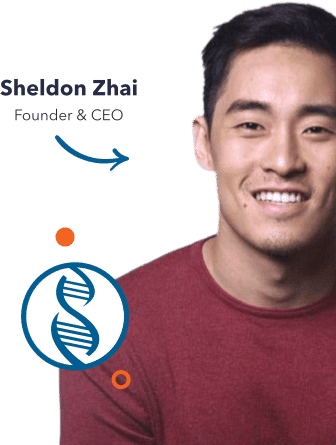
Sign Up Form
Join over 2,500 top life science marketing directors who receive weekly digital marketing tips.
SEO Sign Up Form Mobile
Join over 2,500 top life science marketing directors who receive weekly digital marketing tips.
ON PAGE CONTENT OPTIMIZATION
FOR LIFE SCIENCES COMPANIES
Having enough quality content is extremely important for a website’s ranking potential. Unfortunately, often times, life science companies face the issue of clearly communicating the complex. Researchers are well aware that journals and peer reviewed articles must leave no details unturned. However, this conflicts with basic principles for effective marketing. Content needs to be presented clearly with a focus on the big picture ideas.
Generally, many life science companies have numerous products and services that include complex technical specifications, case studies, protocols, product information, and more. In order to simplify the website and reduce clutter, companies cut down or misplace SEO-beneficial. As a result, some of the best content for search engine ranking potential is stored away in hard to index tabs or PDF documents that bear little to no impact on ranking potential for search engines.
Later we will examine more in depth site architecture for optimal ranking potential. Most importantly, content must be laid out strategically utilizing an effective keyword map.
13. URLs are descriptive and optimized.
Ensure that your URLs are descriptive and optimized for your services. This means that if too many of your URLs are dynamically generated or with session IDs, it should be updated to something easier for humans to read and ideally incorporate your target keyword.
A LIFE SCIENCE EXAMPLE
Before: https://www.biotech.com/index.php?main_page=index&cPath=211_259
After: https://www.biotech.com/services/knock-in-mice/
Fig 5. Dynamic URLs versus the preferred Static URLs
14. Title tags are optimized.
Title tags are pieces of code on a webpage often used on search engine results pages (SERPs) to display preview snippets for a given page.

Code Sample:
<head>
<title>Example
Title</title>
</head>
Fig 6. Meta title tags are what appear above your website’s URL on Google Organic Search.
Title tags should be optimized and unique. It should include your targeted keywords assigned to the page. Title tags should not be targeting the same keyword for multiple pages because this results in your website’s own pages competing with each other for ranking positions. See Moz’s guide on preventing keyword cannibalization. Google, in turn, is confused on which page to rank for what keyword and ends up ranking neither.
Additionally, your brand name should be included in your title tag to improve click-through rates. Title tags are about 55-60 characters (512 pixels) to be fully displayed. You can test or review title pixel widths in Screaming Frog.
An example of an ideal homepage title tag for a company that focuses on CRISPR services and knock in-mice would be: CRISPR Services, Knock-In Mice – Company Brand Name
15. Optimize your meta descriptions for click-through-rates.
Meta descriptions are what show up directly on Google’s search results. They are one of your company’s best opportunities at improving click through rate.
A well written meta description should provide a clear unique value proposition for why a potential customer should view your offerings rather than a competitor’s website ranking next to yours.

Code Sample:
<head>
<meta name=”description” content=”This is an example of a meta
description. This will often show up in search results.”>
</head>
Fig 7. Meta Description tags are what appear below your URL on Google Organic Search.
This is your chance to expand upon your unique value proposition.
Pro tip: Describing your products or services as ‘high quality’ is not a comparative advantage versus your competitors. Even the competitor providing the lowest quality products will write ‘high quality.’
16. Check for pages missing page titles and meta descriptions.
In the Moz Crawl Report requested in the ‘Initial Setup and Audit’ section, you will see a list of all missing page titles and meta descriptions. These should be updated for all pages on your website to help guide search engines to navigate your site and index it appropriately.
17. The on-page content includes the primary keyword phrase multiple times as well as variations and alternate keyword phrases.
As a rule of thumb, it is ideal to include your primary keyword phrase and permutations of it up to five times on each page. Luckily most life science websites are thin on quality landing page content. A client competing for a highly competitive revenue driving keyword, ‘Custom Monoclonal Antibodies’ drafted an additional 400 words of content describing their services. As a result, they moved up to the #1 spot on Google rankings for many years and directly attributed hundreds of thousands of dollars of additional revenue because of it. This brings us to our next point
18. There is a significant amount of optimized, unique content on key pages.
Each key service page should provide a significant amount of optimized unique content. Up to five hundred words of content with diagrams is ideal. For product pages, there should be a main parent product page for each group of child products. This is especially important for life science ompanies because many companies segment products by specific genes or other parent categories. If there is not a parent page for a gene family, then Google will run into many difficulties to index your website for these genes, nor will you be able to run effective Google AdWords campaigns to the website.
For product pages, it is especially important that you are not using a standard template with the same content across all pages. This will count towards duplicate content and lower your rankings.
19. The primary keyword phrase is contained in the H1 tag.
Placing your primary keyword phrase in the H1 tag will provide an extra boost for your rankings.
20. Image filenames and alt text are optimized to include the primary keyword phrase associated with the page.
Each image can have a piece of code embedded within the image. If your company has numerous images on your website that illustrate your services or products, it’s important to add an image alt tag.
AN OPTIMIZED LIFE SCIENCE PAGE
We recently received a lead that was wondering why their website wasn’t ranking for the keyword “elisa kits”.

Fig 8. An example of an image alternate tag. This will help you rank on Google image search.
Our answer: there is no dedicated page targeting the keyword “elisa kits” that can be optimized. These products are only listed on this page:
This page is dedicated to all test kits including AGID kits and IHC test kits, so this page cannot be optimized for “elisa kits”. A dedicated page to Elisa Kits should be created to optimize for this keyword.
What is ranking…..and why?

Fig 9. An example of a parent category page without substantial content.

The top company to rank for “elisa kits” in Google is Thermofisher with this page.


Fig 10. An example of a fantastic parent category page that has substantial, relevant content.
21. Homepage content is optimized.
Your homepage should contain at least one paragraph utilizing your revenue driving keywords. There should be enough content on the page to give search engines an understanding of what the page and website as a whole is about. 150 or more words is the minimum recommended amount.
22. Are there pages targeting head terms, mid-tail, and long-tail keywords?
Prevent keyword cannibalization across your pages by correctly targeting multiple variations of your designated keyword.
23. Do a site: search in Google for important keyword phrases.
Keywordtool.io is a subscription based tool that can provide long-tail keywords for your keyword phrases.
24. Content to help users convert and is highly functional.
In addition to search engine driven content, there should be content to help educate users about the product or service. Utilize the best copywriting guide to help you structure your content in a way that drives a customer down a natural funnel.
Just a few examples include: AIDA, (Attention, Interest, Desire, Action) and our personal favorite for homepages in particular: AICPBSAWN.
- Attention – Biggest benefit, biggest problem you can solve, USP
- Interest – Reason why they should be interested in what you have to say
- Credibility – Reason why they should believe you
- Proof – Prove what you are claiming is true
- Benefits – List them all
- Scarcity – Create scarcity
- Action – Tell them precisely what to do
- Warn – What will happen if they don’t take action
- Now – Motivate them to take action now
25. Good headlines on blog posts.
Good headlines go a long way. Make sure the headlines are well written and draw users in. Utilize this brilliant guide by Copyhackers to craft engaging headlines
26. Amount of content versus ads.
Since the implementation of Panda, the amount of ad-space on a page has become important to evaluate. Make sure there is significant unique content above the fold. If you have more ads than unique content, you are probably going to have a problem.
27. Are you linking to your internal pages in an SEO-friendly way?
Are you describing the page you’re linking to in the anchor text, so that both users and search engines understand what it’s about? We recommend not using anchor text in your global navigation because it can look like over-optimization. Stick to in-content links instead.

